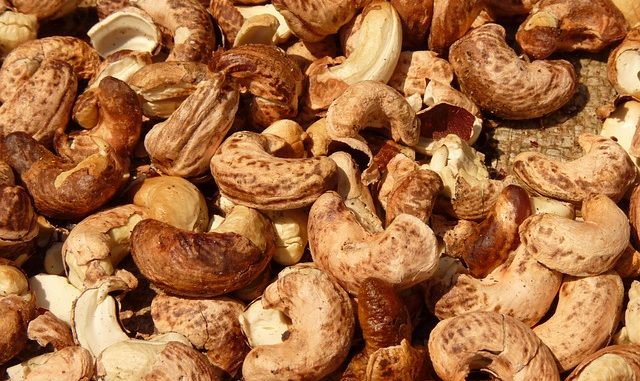
When Nat King Cole was singing about chestnuts roasting on an open fire he was not really thinking about their flavour but how it fitted the occasion. However, the flavour of any nut is considerably enhanced by heat processing, especially roasting. Although it might develop to produce something exceptional in flavour, it might not help nutritionally. The temperature of processing is important too – too high and the nut is cremated and too low, well just not enough positive sensory changes are produced. Yes, roasting nuts has a lot more thought needed!
Reaction Pathways For Roasting Nuts
Generally, there are three distinct pathways in the formation of aroma. We have the ubiquitous Maillard reactions with Strecker degradations that occur between amino acids and sugars. There are lipid losses due to pyrolysis and other oxidations and there is finally, a simple caramelisation of the sugars themselves into polymeric by-products.
The types of compounds formed from Maillard reactions are interesting volatile heterocyclic variants:- furans, pyrroles, pyrazines, pyridines and Strecker aldehydes to name a few. The aromas come from 3-methylbutanal, phenylacetaldehyde, methional and others. Other compounds come from a rich interplay during caramelization such as heterocyclic oxygen types – furans, and maltol.
A recent study looked at various healthy nutrients in roasted nuts such as macadamia, hazelnuts, almonds, pistachios and walnuts. The levels of healthy and potentially toxic compounds were examined before and after such heat processing.
The fatty acid compositions were not affected by the roasting process which implies there were no significant changes in the lipids. Interestingly, roasting should generate slightly sweeter and pungent or fruity notes during heating. Why ? lipid oxidation, because the enzymes catalysing lipid breakdown are denatured so only oxygen based reactions can successfully occur. This leads to a series of fruity flavours aldehydes and ketones.
One flavour compound malondialdehyde which is associated with Maillard browning increased with the higher temperatures for roasting. In one example by 17 times in walnuts. There were significant losses of tocopherol isomers which are generally important antioxidants and precursors of vitamin A for example. In fact, gamma-tocopherol levels dropped by 70% and the hydrophilic antioxidant capacity also declined markedly. Walnuts appeared to be most affected by the roasting process.
Some acrylamide, the potent neurotoxin increased only significantly in almonds to about 1.2 mg/kg but why this wasn’t the case in the other nuts isn’t clear. Perhaps there is a higher nitrogeneous element available for reaction in almonds.
From the heating point of view, a low to middle temperature of between 120 to 160 Centigrade is ideal for bringing out the best sensory flavour without losing too much of the nutritional value.
Reference
Schlörmann, W., M. Birringer, V. Böhm, K. Löber, G. Jahreis, S. Lorkowski, A. K. Müller, F. Schöne, and M. Glei. (2015) Influence of roasting conditions on health-related compounds in different nuts. Food Chemistry 180 pp. 77-85 (Article)
I always like your short little essay items on food. Plenty of stuff on colour and flavour changes.
I often look at this site through the google search engine and I have been reading many of your blogs. This one about nuts is a good one because I think that food probably ought to be as little processed as possible. I have started investigating vegan diets and I know food needs to be heated up to make it safe and so on but I am concerned about roasting as a way of creating toxins. By the way I noticed that some of the comments on the BBC look like they have come from spam.
This is still worth checking out. Worth a read!
I love my nuts being roasted!